Decarbonization
Unpacking Hydrogen’s Role in Decarbonizing the Electricity Sector
The following content is sponsored by the National Public Utilities Council

Hydrogen’s Role in Decarbonizing the Electricity Sector
Hydrogen constitutes 75% of the elemental mass in our universe.
According to the International Energy Agency (IEA), it could also play a pivotal role in global decarbonization efforts.
This infographic, created in partnership with the National Public Utilities Council, explores three ways this element could support the decarbonization of the global electricity sector.
Hydrogen 101
First, let’s get a few basics about hydrogen out of the way.
While abundant in nature, hydrogen is rarely found in its elemental state (H2) on Earth, meaning that it needs to be separated from other chemical compounds, such as water (H2O). Once extracted, however, it becomes a versatile and energy-dense fuel source, containing approximately three times the energy content of gasoline or natural gas.
There are several methods to extract hydrogen from compounds. Depending on the production method and energy source, the resulting hydrogen is often categorized by color to show its emission impact.
| Color | Hydrogen Production Method | Energy Source |
|---|---|---|
| Black | Gasification | Coal or Lignite |
| Gray | Steam Methane Reforming (SMR) | Natural Gas |
| Blue | SMR + Carbon Capture and Storage (CCS) | Natural Gas |
| Purple* | Electrolysis | Nuclear Energy |
| Green | Electrolysis | Renewable Energy |
*Purple hydrogen is also referred to as red or pink hydrogen.
Today, black, gray, and blue hydrogen are used in emission-heavy industries such as petroleum refining and ammonia production.
The technology and infrastructure for purple and green hydrogen, on the other hand, are still taking shape. As they progress, these emission-free sources of hydrogen are expected to play a pivotal role in decarbonizing many hard-to-abate sectors, including power.
Three Ways Green Hydrogen Can Help Decarbonize
Now that we’ve covered hydrogen basics, let’s dive into where emission-free hydrogen can fit in the race to decarbonize our global electricity system.
#1: Hydrogen and Natural Gas Blending
Hydrogen can be blended with natural gas in existing pipeline infrastructure for lower-emission power generation.
According to Jenbacher, a 20–30% hydrogen volume can lead to a 7–11% decrease in CO2 emissions, compared to natural gas on its own.
In 2022, U.S. electricity from natural gas generated 743 million metric tons in the United States. A 9% reduction in emissions through hydrogen blending lowers emissions by 67 million metric tons CO2, all without the need to build new infrastructure.
#2: Fuel Cells
A fuel cell generates electricity through an electrochemical reaction between hydrogen and oxygen, with water as the only byproduct.
By using green or pink hydrogen, fuel cells can provide 100% emission-free electricity that is also efficient, reliable, and dispatchable.
#3: Energy Storage
Energy storage plays a pivotal role in decarbonizing the power sector by balancing the intermittent nature of renewables.
While other technologies, such as lithium-ion batteries, can also provide energy storage, hydrogen has a greater potential to offer both large-scale and long-term storage, up to several months at a time.
As technology advances, the IEA predicts that global underground hydrogen capacity will grow by more than 200,000% in the next 30 years, reaching 1,200 TWh in 2050. That amount of energy can power 70,000 U.S. homes for an entire year, underscoring the untapped potential that lies within hydrogen.
Learn how the National Public Utilities Council is working towards the future of sustainable electricity.
Climate
Mapped: Global Temperature Rise by Country (2022-2100P)
In this set of three maps, we show the global temperature rise on a national level for 2022, 2050, and 2100 based on an analysis by Berkeley Earth.
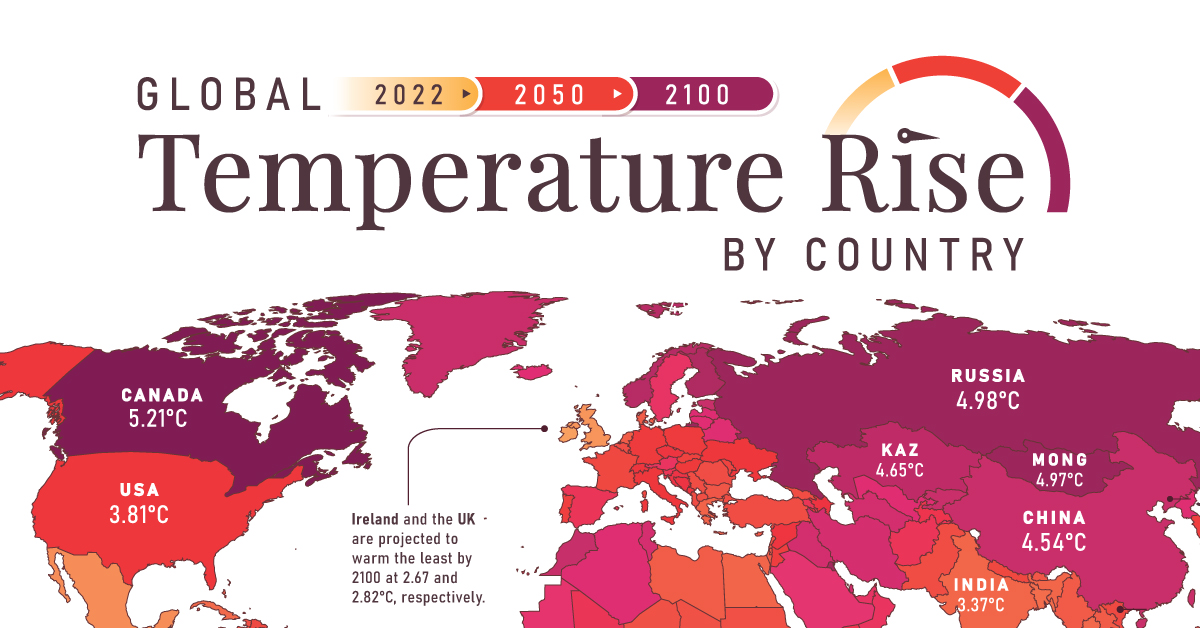
Mapped: Global Temperature Rise by Country (2022-2100P)
Many scientific authorities, such as the Intergovernmental Panel on Climate Change (IPCC), often discuss the need to limit planetary warming to 2°C above pre-industrial levels.
But did you know that this warming will not be evenly distributed throughout the globe due to factors such as geography, weather patterns, ocean currents, and the influence of human activities?
To discover the current and projected nuances of this uneven warming, these three maps created in partnership with the National Public Utilities Council visualize the global temperature rise by country, using new and updated data from Berkeley Earth.
Current State of Warming
The three maps above visualize warming relative to each country’s average 1850-1900 temperatures.
Looking at warming in 2022, we see that average national warming (i.e. warming excluding oceans) is already 1.81°C above those numbers, with Mongolia warming the most (2.54°C) and Bangladesh warming the least (1.1°C).
As the map depicts, warming is generally more accelerated in the Global North. One of the reasons for this is Arctic amplification.
Arctic amplification refers to the disproportionate heating experienced in the Arctic compared to the rest of the planet. This amplification is fueled by multiple feedback loops, including decreased albedo as ice cover diminishes, leading to further absorption of heat and exacerbating the warming effect.
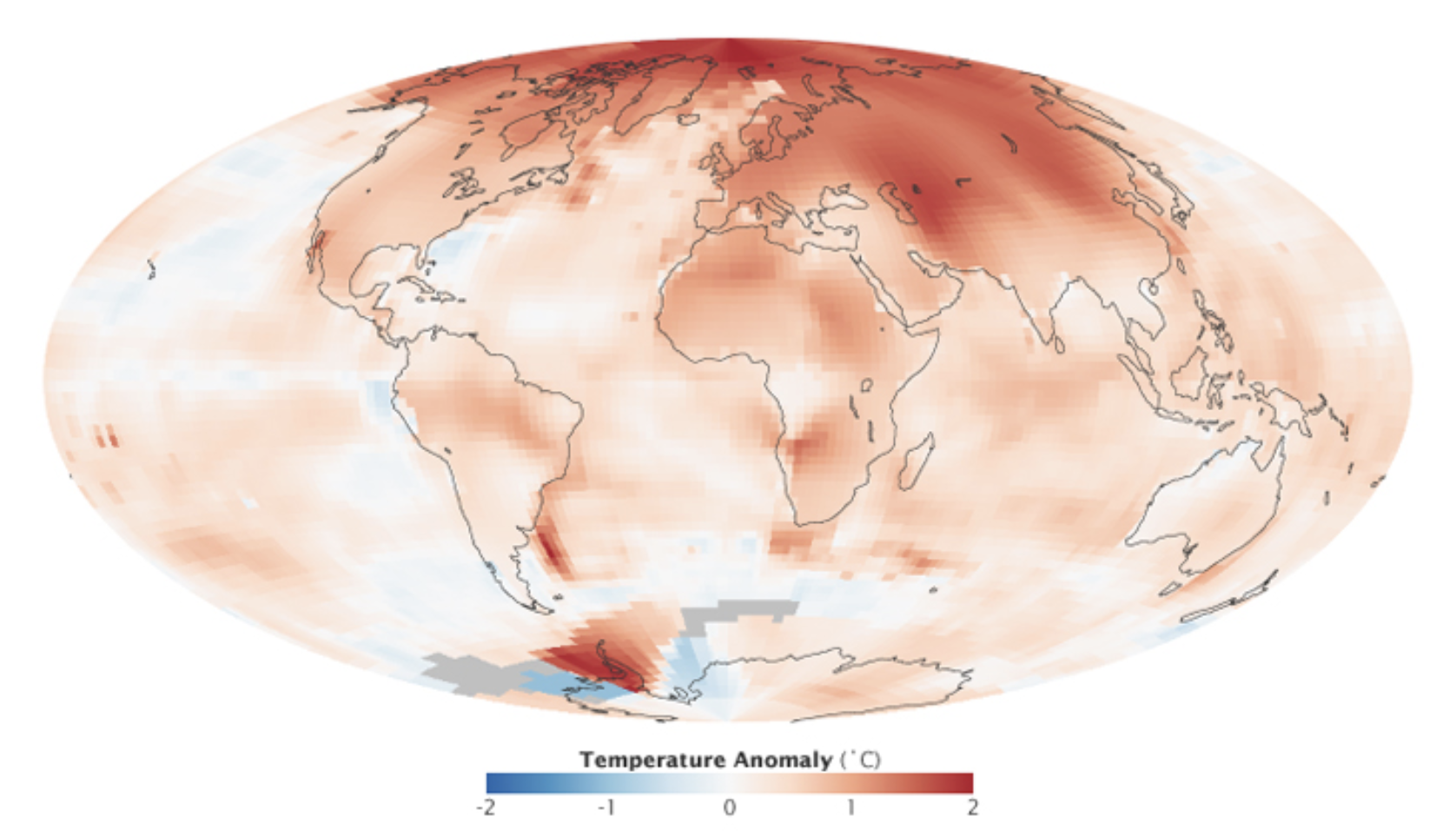
Arctic amplification. Source: NASA
Aside from modern-day observations, the effects of Arctic amplification are also clearly seen in climate models, where accelerated warming in countries such as Russia and Canada is seen through 2100.
Projected Warming in 2050 and 2100
Moving over to the second and third maps in the slides above, we discover country-level 2050 and 2100 warming projections.
These projections are based on the IPCC’s “middle-of-the-road” scenario, titled Shared Socioeconomic Pathway (SSP) 2-4.5. Out of the various established pathways, this one is the closest to expected emissions under current policies.
2050 Projections
Under the SSP2-4.5 scenario, average national warming is projected to be 2.75°C above average 1850-1900 temperatures in 2050. This includes Mongolia, with the most substantial warming of 3.76°C, and New Zealand, with the mildest warming of 2.02°C.
To put those temperatures into context, here are the risks that would likely accompany them, according to the IPCC’s latest assessment report.
- Extreme weather events will be more frequent and intense, including heavy precipitation and related flooding and cyclones.
- Nearly all ecosystems will face high risks of biodiversity loss, including terrestrial, freshwater, coastal and marine ecosystems.
- Accelerated sea level rise will threaten coastal cities, leading to mass displacement.
Let’s now take a look at 2100 projections, which would have significantly higher levels of risk unless fast and extreme mitigation and adaptation measures are implemented in the upcoming decades.
2100 Projections
2100 projections under the SSP2-4.5 scenario depict an average national warming of 3.80°C.
More than 55 countries across the globe are projected to have warming above 4°C in comparison to their 1850-1900 averages, and nearly 100 above 3.5°C.
Here is what those levels of warming would likely mean, according to the IPCC.
- 3-39% of terrestrial species will face very high risks of extinction.
- Water scarcity will considerably affect cities, farms, and hydro plants, and about 10% of the world’s land area will experience rises in both exceptionally high and exceptionally low river flows.
- Droughts, floods, and heatwaves will pose substantial threats to global food production and accessibility, eroding food security and impacting nutritional stability on a significant scale.
Generally, warming at this level is expected to pose substantial catastrophic risks to humanity, necessitating swift and bold climate action.
Learn more about how electric utilities and the power sector can lead on the path toward decarbonization here.
Clean Energy
Breaking Down the $110 Trillion Cost of the Clean Energy Transition
The clean energy transition will cost $110 trillion in global capital investments between 2021 and 2050. Here’s that sum broken down by sector.
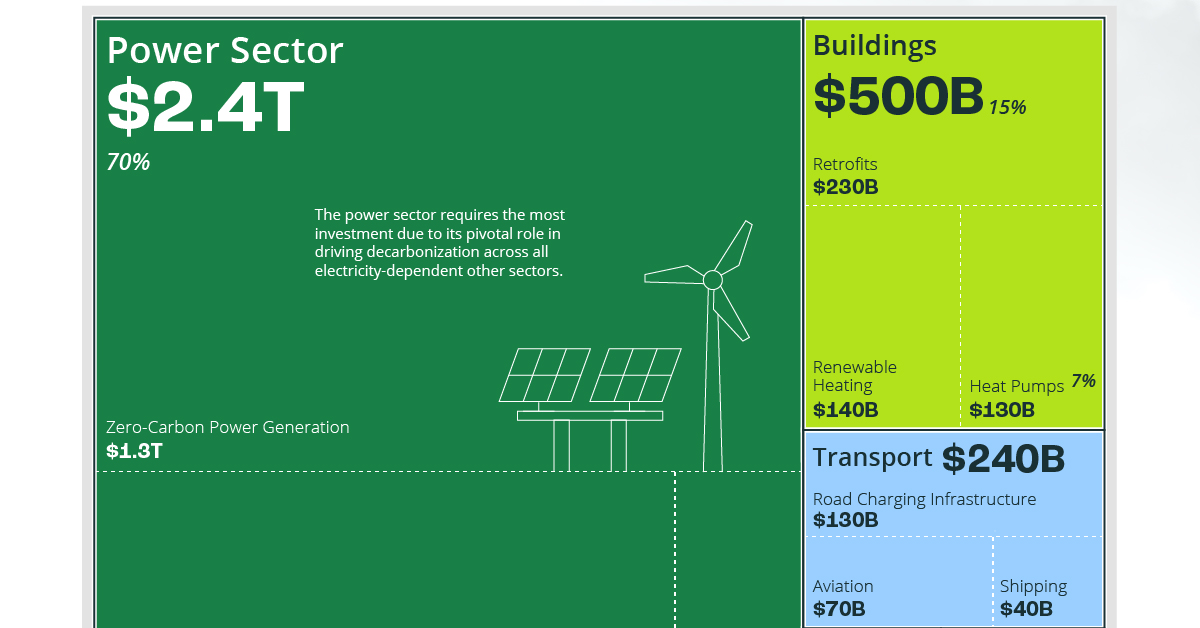
The $110 Trillion Cost of the Clean Energy Transition
The Energy Transitions Commission estimates that achieving net-zero by 2050 requires an average annual investment of $3.5 trillion globally between 2021 and 2050.
That’s a total of $110 trillion in capital investment, or 1.3% of projected global GDP, over the next three decades.
The question then arises: where should this substantial sum of money be allocated?
In collaboration with the National Public Utilities Council, this graphic delves into the answers to that question utilizing data from the Energy Transitions Commission.
How Much Will the Clean Energy Transition Cost?
Of the $3.5 trillion dollars that needs to be invested annually into a net-zero economy, around $2.4 trillion should flow into the electricity sector, according to the Energy Transitions Commission. This accounts for 70% of the annual investment.
Decarbonizing the electricity sector holds significant importance as it can serve as a catalyst for the decarbonization of all other sectors, including:
- Buildings, which are becoming increasingly electrified through the growing use of heat pumps
- Electrified road transportation
- Electricity-intensive industrial activities, such as cement, steel, and chemical production
- Green hydrogen production
Now, let’s take a collective look at the avenues of investment needed to reach net-zero by 2050 in more detail.
| Sector | Subsector | Average Capital Investment Needed Per Year 2021-2050 | Total Sector Investment Needed Per Year 2021-2050 |
|---|---|---|---|
| The Power Sector | Zero-Carbon Power Generation | $1300B | $2400B |
| Power Networks | $900B | ||
| Power Storage and Grid Flexibility | $200B | ||
| Buildings | Retrofits | $230B | $500B |
| Heat Pumps | $130B | ||
| Renewable Heating | $140B | ||
| Transport | Road Charging Infrastructure | $130B | $240B |
| Aviation | $70B | ||
| Shipping | $40B | ||
| Carbon Removal | Natural Climate Solutions (NCS) | $100B | $130B |
| Hybrid and engineered carbon removal solutions | $30B | ||
| Clean Hydrogen | Production | $40B | $80B |
| Transport and storage | $40B | ||
| Industry | Chemicals | $40B | $70B |
| Steel | $10B | ||
| Cement | $10B | ||
| Aluminum | $10B |
All figures are in real 2021 U.S. dollars
Overall, the diversity of the table above underscores the multifaceted approach required for a low-carbon transition.
Is the World on Track to Reach Net-Zero?
In 2022, the global capital investment in the clean energy transition totaled $1.1 trillion—approximately one-third of the required annual average to reach net-zero.
With that said, it’s important to note that the $3.5 trillion figure is an average across 29 years. Opportunities to catch up still exist, although the window is closing quickly.
According to the Energy Transitions Commission, investments must double from their current levels to around $2 trillion by 2025 and peak at around $4.2 trillion by 2040.
To remain on track to net-zero, therefore, we must make significant and rapid investments in all sectors, with a primary focus on the power sector.
Learn more about how electric utilities and the power sector can lead on the path toward decarbonization here.
-
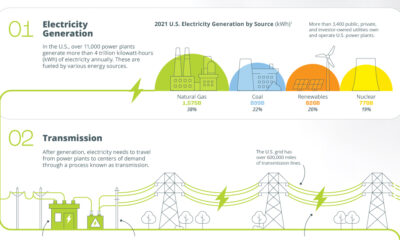
 Electrification1 year ago
Electrification1 year agoVisualized: How the Power Grid Works
-
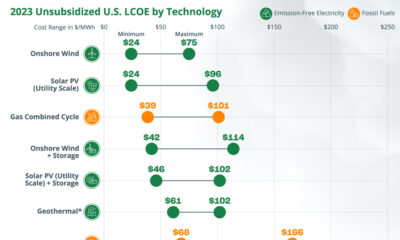
 Energy Shift9 months ago
Energy Shift9 months agoRanked: The Cheapest Sources of Electricity in the U.S.
-
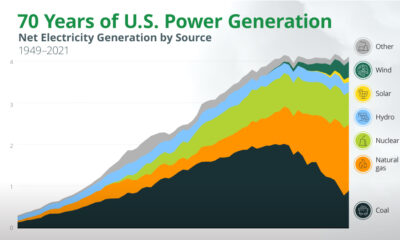
 Energy Shift1 year ago
Energy Shift1 year agoAnimated: 70 Years of U.S. Electricity Generation by Source
-
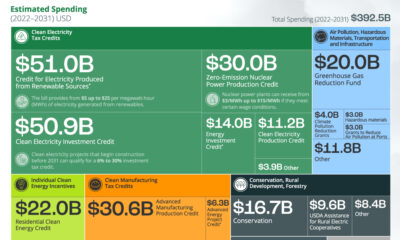
 Clean Energy1 year ago
Clean Energy1 year agoBreaking Down Clean Energy Funding in the Inflation Reduction Act
-
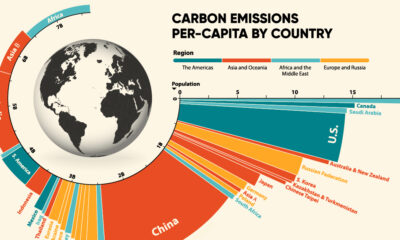
 Emissions1 year ago
Emissions1 year agoVisualizing Global Per Capita CO2 Emissions
-
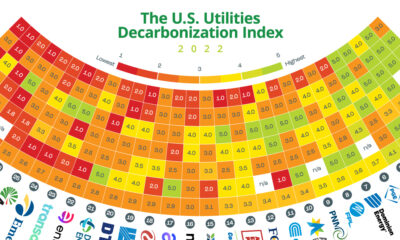
 Decarbonization1 year ago
Decarbonization1 year agoThe U.S. Utilities Decarbonization Index
-
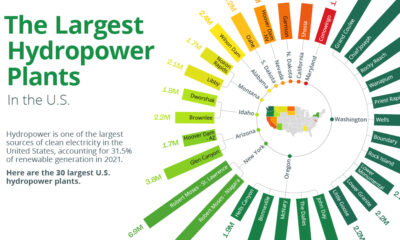
 Clean Energy1 year ago
Clean Energy1 year agoThe 30 Largest U.S. Hydropower Plants
-
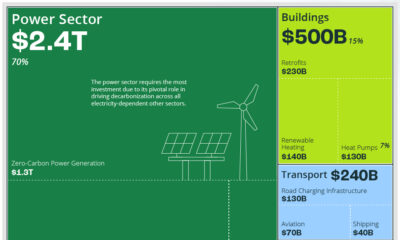
 Clean Energy7 months ago
Clean Energy7 months agoBreaking Down the $110 Trillion Cost of the Clean Energy Transition

